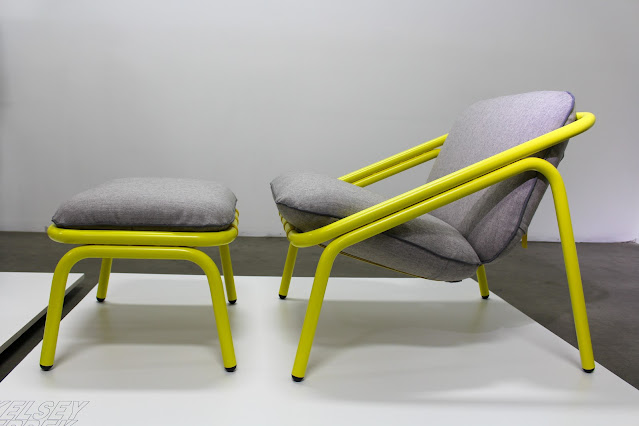Color in Industrial Design (part 2)

2. Color as user interface
Color can give cues as to how to operate a machine or an appliance. Even without understanding of the function of a form, a contrasting colored feature indicates how and what to do. A green button usually indicates “go” or “start,” a red button may indicate, “stop” or on a trigger may mean, “fire.” Our traffic lights use green, yellow and red to direct drivers with its color cues.
The white stripes of a crosswalk on the street direct the pedestrians where to safely cross and warn drivers. The controls of an X-Box game controller are colored differently. Gray is used for the controls that are ordinary and commonly used and colors are used for the special functions. With a series of controls, only the most important and critical ones are usually colored.
This application should be used carefully and with consideration. Liberal use of color on many buttons or controls dilutes the power and influence of the colors. Contrasting colors can be applied to those controls that are critical and most important, even though they may be rarely used.
Figure 3. User interface cues on the X-Box video game controller.
3. Color as fashion
Fashion announces a fresh new palette of trendy colors every season. Application of these colors in design can attract buyers who are, consciously or not, affected by today’s hot palette. These colors change depending on the target market, the geographic region, the season of the year, the culture and the design. Because of these factors of variability, considerable research must be done to select an appropriate palette.
Figure 4. Fashionable colors available for the Apple iPod mini.
How does one find out about color trends and fashion? Current periodicals and design magazines will exhibit what is hot at the moment, but can’t be relied upon for predicting the future of color trends. Besides for industrial design, the products shown were likely to have been designed two or three years earlier.
One option is to work with a professional color forecaster. Color forecasters are service firms that work with a design firm on their particular design project and present a series of color options. Pantone color matching system, has color matching and specification tools and trends on their website. Color Marketing Group is an international association for color and design professionals. Twice a year they release a report of color trends based on a conference of their members.
How can one do this without paying a professional? Do what these firms do, make observations from the world of fashion, art, and world events. Inspiration can come from fashion runway shows, trade shows, and boutique shops. Ideas can also come from new art exhibitions and galleries. The best graphic designers produce creative designs with fresh colors in magazines such as “Graphis,” “Print” or “How.”
One can also look at what’s happening in the current culture? Observations can be made of the people and objects in TV or movies that influence our world. For example, the recent Winter Olympics in
4. Color as identity
Color can be used to identify the object with a person, a company, or a group. The use of color for a corporation becomes critical for those with strong brand recognition. Even a sports team is identified through its application of color on helmets and uniforms. Color can also identify a user or efficiently organize items.
Astro, a product design firm based in
Figure 5. Kensington SmartSockets designed by Astro.
Corporations are well aware how powerful color can identify them with their brand. The teal colored gift box with a white ribbon is synonymous with Tiffany’s. Green and yellow on a tractor immediately identifies it with John Deere.
Colors used to identify are most successful when they are strong, saturated, and primary or secondary colors. This is to easily distinguish one from the other. Complex and subtle color distinctions may be confusing and harder to identify. “Did we par
Next post: Color as form emphasis






Comments